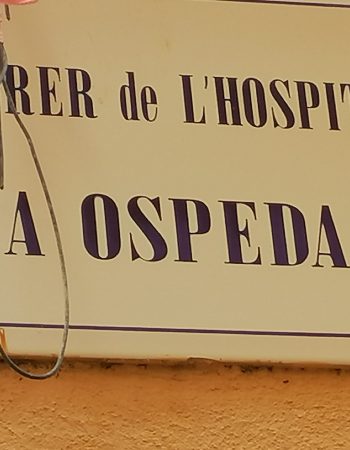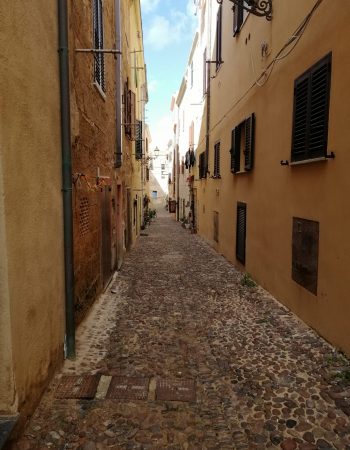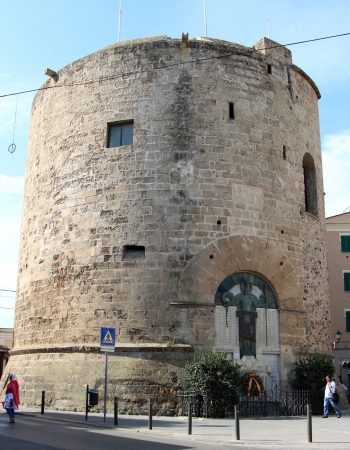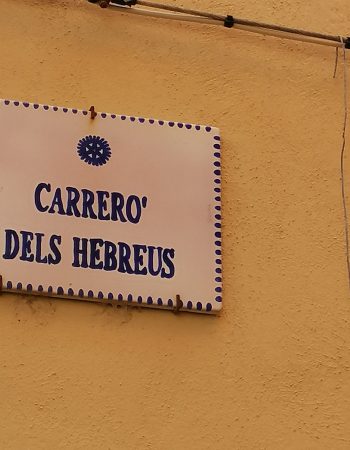The city bears many signs of its Jewish past starting with the Jewish or the Porta Terra (Land Gate) Tower, now a war memorial. The tower was built in 1360 as part of the city’s defences and paid for by Cagliari’s Jewish Community. The juharia – the Jewish Quarter – stretched from the Myrador Bastion where the hospital once was and where currently the university stands. It extended to the back of the Porta Mare (The Sea Gate) between the Marco Polo, Pigafetta and Magellano Bastions and the Cathedral Square (Piazza del Duomo). What once was the Jewish Quarter is currently a maze of carefully kept alleyways, such as the Carrero dels hebreus, with flower pots on the outside walls of the buildings. The synagogue is thought to have been in the Santa Croce Piazza: built in 1381, it was extended and restaured in 1438, and after the 1492 Expulsion it was replaced by the Santa Creu Church which is no longer standing. There is news of a cemetery which in 1381 was known as reyal, and that in 1386 was moved outside the built up area, towards the Church of Saint Augustine, quite close to the sea, although nowadays there are no visible traces.
Jews have been in Sardinia for a long time: in Ancient times (1st Century of the ME), soon after the arrival in Rome. Historians say that in the year 19 of the Modern Era, Emperor Tiberius sent 4000 forcibly conscripted Roman Jews to Sardinia to fight brigandage and to mine ore. At the end of conscription many went back to the mainland, but some settled on the island as 3RD-5TH Century archaeological ruins show, and specifically the catacombs of Saint Antioch in Western Sardinia. The silence shrouding the Jewish presence in Sardinia lasted for about eight centuries. Their presence was mentioned again in the 14-15th centuries with the with the beginning of the Aragonese Conquest until the 1492 Expulsion. The most important communities were in Alghero, Cagliari and Sassari.
Piazza della Juharia, the Marco Polo, Pigafetta and Magellano Bastions, and Piazza Duomo (the Cathedral Square)





